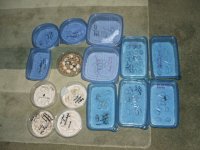gnarhimself
Active member
Probably a silly question here.
Does temperate play a roll in the determination of the sex of corn hathlings.
I read somewhere that crocodiles "nests" temperatures are a direct influence with regards to the gender of the offspring.
Does this occur with cornsnakes as well,for example,if the temps are higher,do you get a higher ratio of males to females,and if the temps are at the lower end of the scale,do you get a higher ratio of females to males??
:shrugs:
Does temperate play a roll in the determination of the sex of corn hathlings.
I read somewhere that crocodiles "nests" temperatures are a direct influence with regards to the gender of the offspring.
Does this occur with cornsnakes as well,for example,if the temps are higher,do you get a higher ratio of males to females,and if the temps are at the lower end of the scale,do you get a higher ratio of females to males??
:shrugs:

